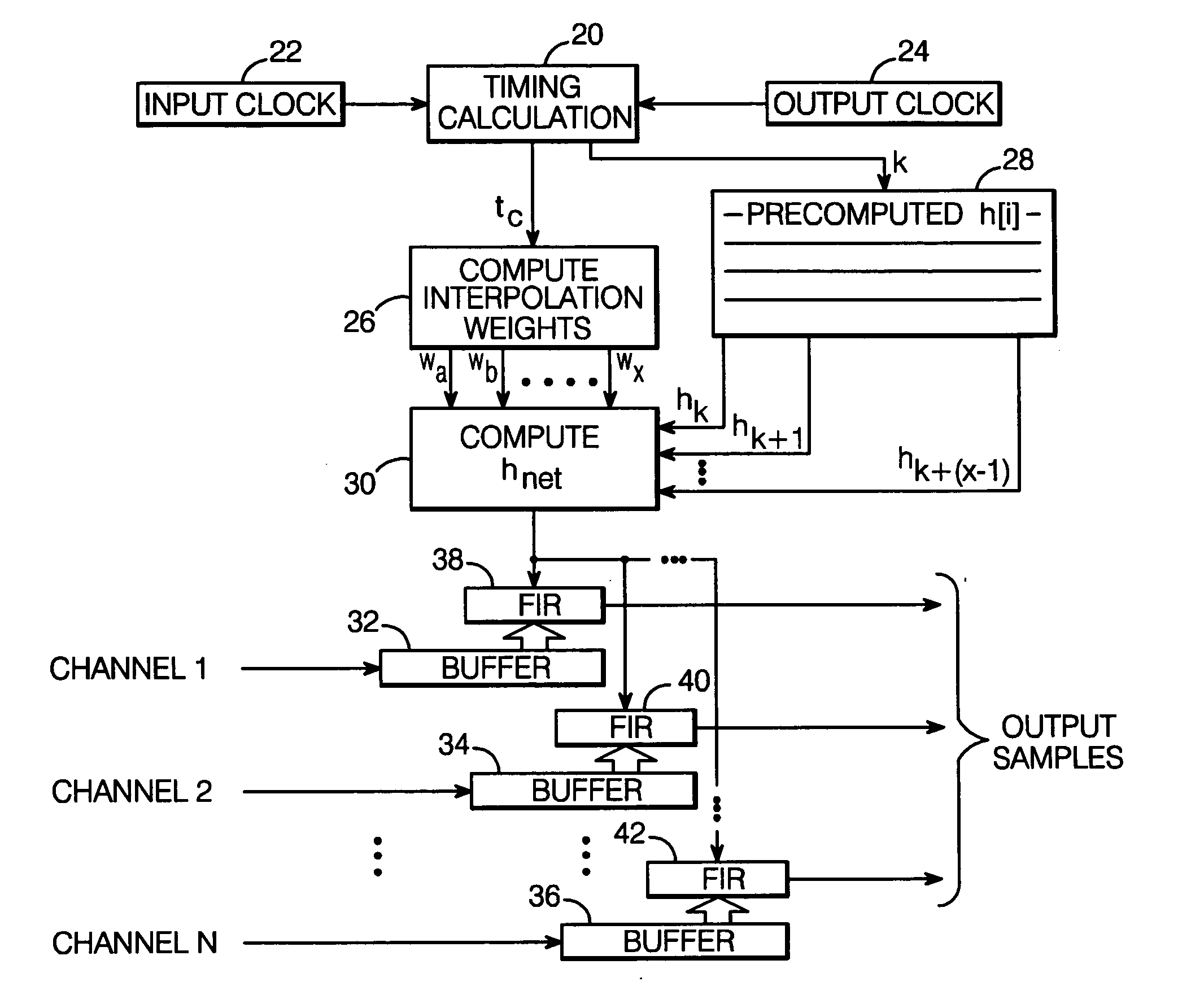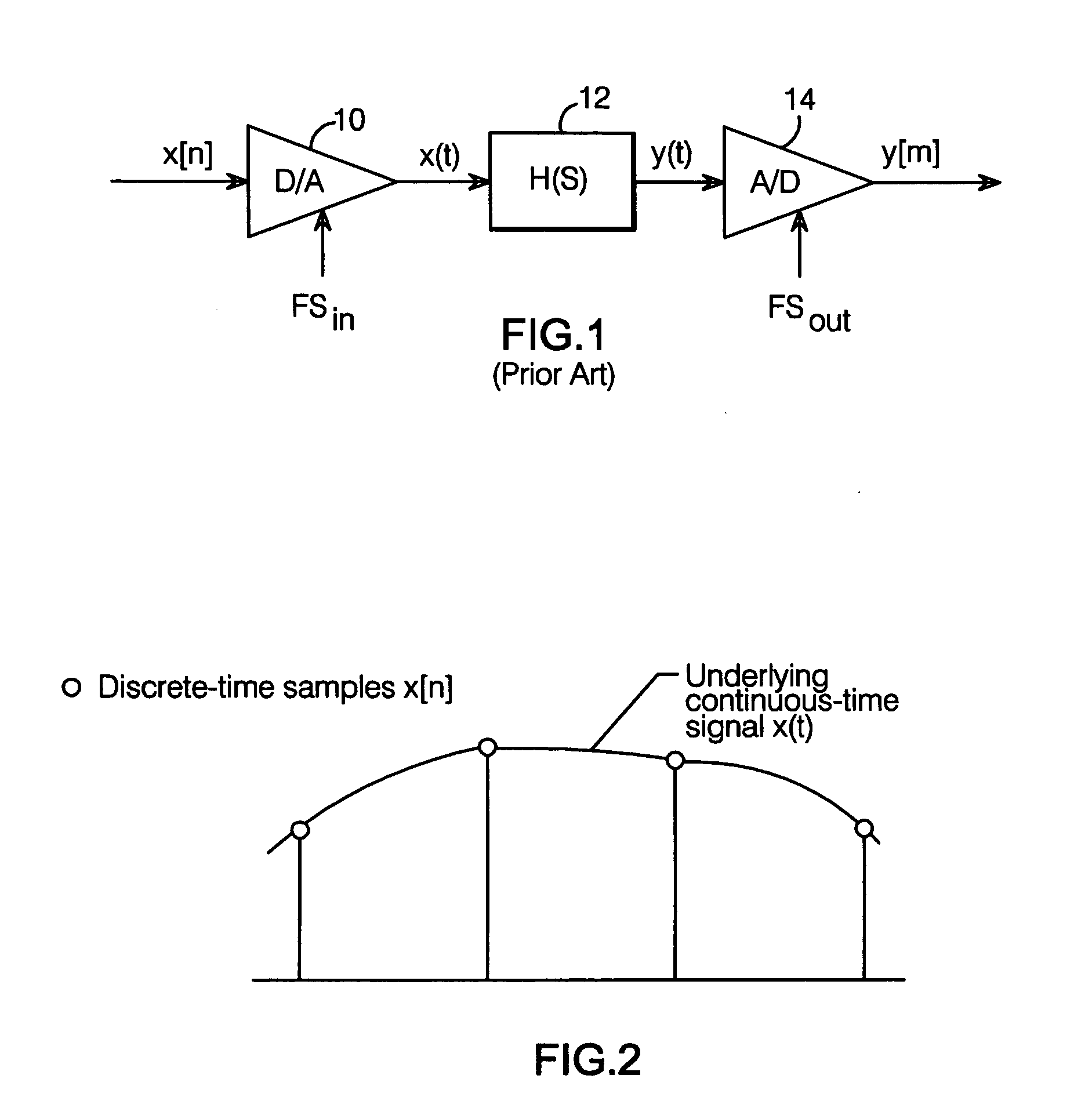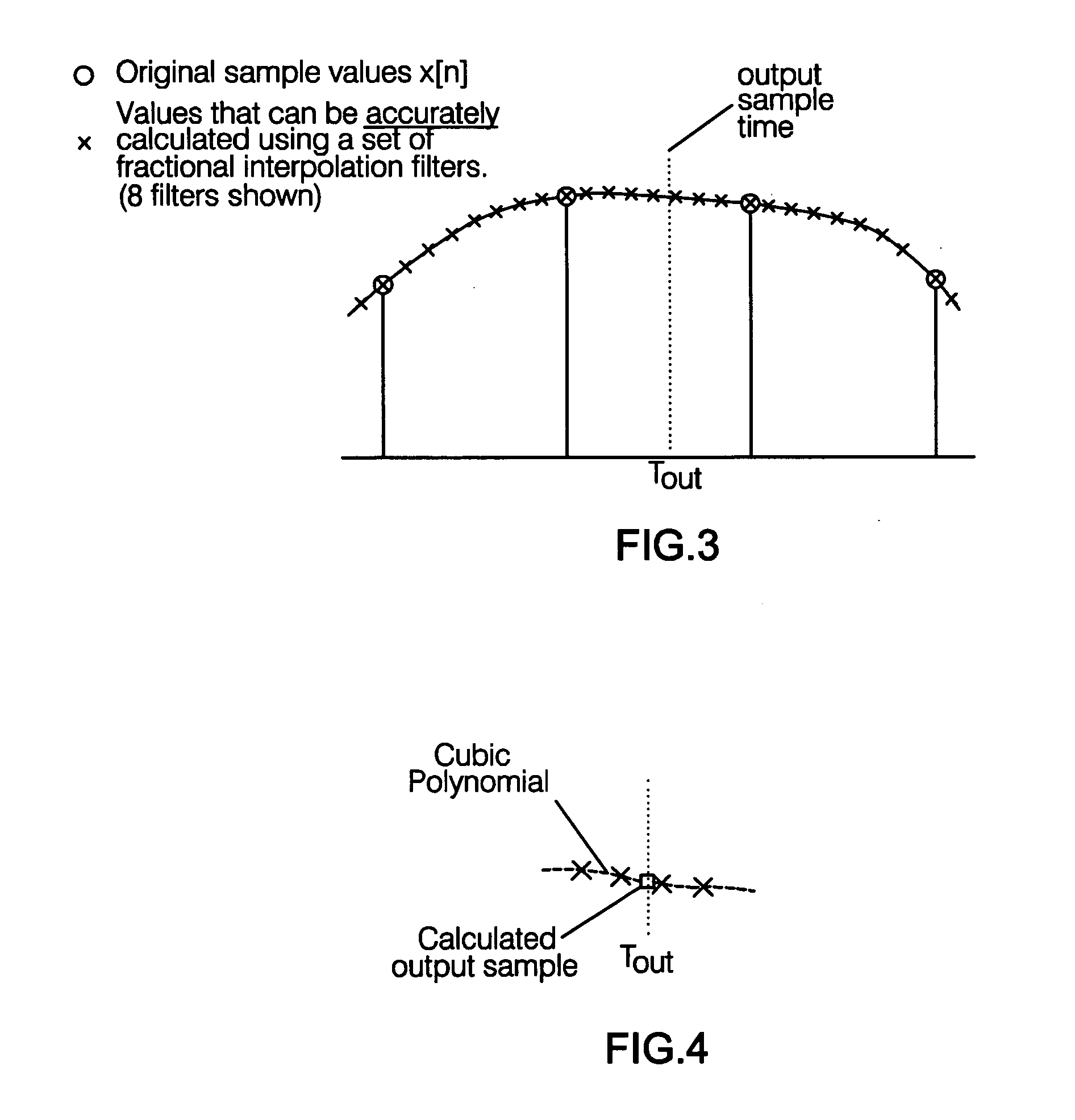Multi-channel sample rate conversion method
a sample rate and multi-channel technology, applied in the field of multi-channel sample rate conversion, can solve the problems of large upfront cost that is shared, small incremental cost for adding additional channels, etc., and achieve the effect of providing computational efficiency and efficient converting multiple audio channels
- Summary
- Abstract
- Description
- Claims
- Application Information
AI Technical Summary
Benefits of technology
Problems solved by technology
Method used
Image
Examples
Embodiment Construction
[0026] Converting between sampling-rates is equivalent to interpolating between sample values in a discrete-time signal. Consider a bandlimited continuous-time signal x(t) that has been sampled at a rate FSin to generate a discrete-time signal x[n]=x(nFin).
This is shown in FIG. 2; the circles represent the input sample values x[n] and the solid line represents x(t). Discrete-time signals are denoted herein with square brackets (e.g., x[n] and y[m]), and continuous-time signals are denoted with parentheses (x(t) and y(t)). Converting to a different output sampling-rate is equivalent to calculating values of the underlying continuous time function x(t) at the output sample times. Let y[m] represent the resampled output signal at rate FSout; y[m] is related to x(t) via the equation y[m]=x(mFout).
[0027] The SRC method described herein is based on polynomial interpolation. For ease of illustration, cubic interpolation is described; however, the technique applies to other order pol...
PUM
 Login to View More
Login to View More Abstract
Description
Claims
Application Information
 Login to View More
Login to View More - R&D
- Intellectual Property
- Life Sciences
- Materials
- Tech Scout
- Unparalleled Data Quality
- Higher Quality Content
- 60% Fewer Hallucinations
Browse by: Latest US Patents, China's latest patents, Technical Efficacy Thesaurus, Application Domain, Technology Topic, Popular Technical Reports.
© 2025 PatSnap. All rights reserved.Legal|Privacy policy|Modern Slavery Act Transparency Statement|Sitemap|About US| Contact US: help@patsnap.com



